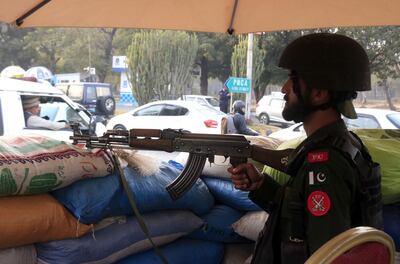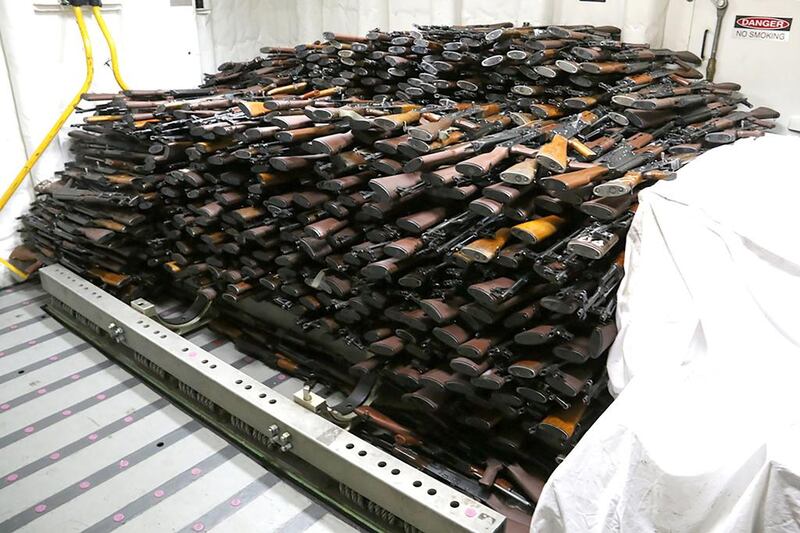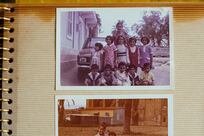Afghanistan is a nation in dire economic and political straits, but another consequence of the abrupt 2021 withdrawal by US and Nato forces from the country is now threatening to destabilise its neighbours.
Security officials told The National this week that advanced weapons and military technology – part of a $7.2 billion arsenal of aircraft, firearms, vehicles, ammunition and equipment including night-vision goggles and biometric devices left behind by western troops – have found their way into the hands of militants in Pakistan who are using them to attack police and soldiers.
The Tehreek-e-Taliban Pakistan and Baloch rebels are among the groups that have obtained modern materiel in Afghanistan. The number of terrorist attacks in the country increased by 27 per cent last year, compared with 2021, according to the Pakistan Institute of Peace Studies, a think tank in Islamabad.
The risk posed by weapons falling into the wrong hands is among the by-products of the baneful and enduring presence of many unresolved international conflicts. From Iraq to Libya, the repercussions have been of major concern. The war in Ukraine is the latest large-scale war in which the huge amounts of weaponry involved present serious challenges for those who want to keep lethal arms from reaching the black market.

In December, Izumi Nakamitsu, the UN’s High Representative for Disarmament Affairs, told the Security Council that states “must apply effective arms-control measures to prevent the diversion of weapons supplied to Ukraine”.
“The large-scale influx of weapons into any armed conflict raises many concerns for peace and security, including risks of diversion, potential spillover and escalation,” she added.
However, according to a March report from the Global Initiative Against Transnational Organised Crime, “there is little real evidence of arms leaking out of Ukraine or of substantial arms trafficking channels out of the country being established”. But there is no room for complacency and the report’s authors claim “every precedent suggests that, especially if the threat is not addressed proactively and imaginatively, when the current war ends, Ukraine’s battlefields could and will become the new arsenal of anarchy, arming everyone from insurgents in Africa to gangsters in the streets of Europe”.
There are international treaties and bodies designed either to register arms sales or to prevent materiel disappearing from conflict-related stockpiles. Similarly, cross-border policing, such as that carried out by Interpol, attempts to stop the illegal online trade in firearms – the dark web being described in a 2018 World Economic Forum report as “an enabler for the circulation of illegal weapons already on the black market, as well as a potential source of diversion for legally owned weapons”.
And although the EU Agency for Law Enforcement Co-operation has said that the arms trade “is small in volume compared to other products trafficked online”, it claims the potential impact on international security is significant.
The effective monitoring of arms flows, as well as robust penalties for those found to be directing weapons into the hands of illegal organisations is necessary. This will require international co-operation both diplomatically and in terms of policing. But if the world is to avoid leaving a toxic legacy of lucrative rogue weaponry dotting various battlefields, then the time to work together is now.





